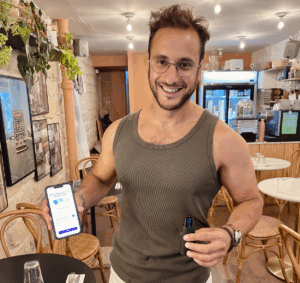Hello everyone !
As part of my kind of masterclass linked to the digitalization of the hotel and catering industry, I spoke one afternoon with the site Coach My Restaurant around topics related to home food delivery.
In addition to the techniques allowing to increase its delivery volume, without affecting too much its profitability, while taking into account the danger of a fixed commission depending on the delivery partner chosen, I spoke with Thomas about Coach My Restaurant THE issues involved in this democratization of food delivery.
The end of economies of scale
Before the Uberized model, restaurants historically specialized in delivery had their own fleet, and could thus achieve economies of scale during rushes.
Thus, a delivery person who cost between 12 and 16€ per hour could deliver 3 or 4 orders in 30 minutes, and thus became profitable, where with a fixed commission of 20 to 30%, there can be no savings in costs. 'scales since each order is reduced by this same commission.
Worse still, the restaurateur can sometimes be tempted to add staff in order to manage the influx of orders passing through intermediaries such as UberEATS or Deliveroo, which can de facto lead to a deterioration of the margin, without the benefits represented by the economies of scale linked to the increase in sales.
In this new model, unfortunately there is no longer a “margin bonus” for good restaurants, which are those that deliver quickly, well, and well.
This is even more true when there are group orders, which are very profitable when they are internalized, and often at a loss when they go through a business provider. who takes a non-degressive commission.
For its part, one of the major changes linked to the Uberization of delivery is that the marketplace now privatizes an order and a customer, with a delivery person who takes one or two orders maximum.
Dilution of demand and end of monopolies
In addition to the reduction in this “margin premium”, the uberized model also leads to increased competition between the historic restaurants which were specialized in delivery, and which therefore had an advantage over the others, and the restaurants newly entered via the intermediaries who supply the delivery people (Deliveroo and UberEATS) in this historically very closed circle.
In other words, there used to be big barriers to entry into the delivery market : there were few restaurateurs who had the backbone strong enough to manage a fleet, take on the human resources part, financially cover lean days, and perform on busy days, with efficient dispatch.
There is also a deterioration of the “performance bonus”, since all restaurateurs are almost on the same level playing field.
The king is dead, long live the king !
If Uberization, or at least the outsourcing of delivery, has reshuffled the cards of the food delivery market, everything is not so dark. Indeed, you have to know how to take advantage of what can be experienced as a crisis to reinvent yourself.
And reinventing yourself therefore involves several avenues:
- meticulous work linked to expenses, looking where savings are still possible.
- work on its brand identity (which will benefit the brand anyway) in order to be better perceived on delivery applications.
- an improvement of its cuisine, in order to differentiate itself from new entrants who are sometimes less careful about the quality of their dishes
- a diversification of its activity, with why not dark kitchens
- etc…
All these points are mentioned in my white paper on the digitalization of catering, in which I share my experiences and ideas for free, and the summary of which you will find here!
If you have other feelings and would like to comment on the subject, do not hesitate to express yourself in the comments, I would be delighted to have your feedback!





